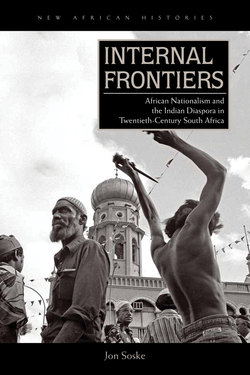Читать книгу Internal Frontiers - Jon Soske - Страница 9
ОглавлениеNote on Language
This is a book about permutations of race. Race appears as a set of social relationships, as a way of talking about and understanding the world, and as an object of intellectual debate and political struggle. As part of its argument, I analyze the production of an African-Indian racial divide by a number of mechanisms, including colonial policies, regimes of urban space, nationalist rhetoric, and everyday social practices. Yet even as this book tracks the far-reaching consequences of this division, it argues against attributing homogeneity to “Africans” and “Indians” as groups or assuming that these categories are adequate for understanding the complexity of identity and social life in mid-century Natal. In depicting both the power and limitations of racial categories, I have given considerable attention to the importance of language. When this book refers to African or Indian newspapers, stores, neighborhoods, political organizations, and individuals, it is marking the effects of how social life was organized and coded in racialized terms. When this book discusses groups as the object of stereotype or racial fantasy, it refers to “the Indian” or “the merchant” in the singular. Because language tends to reify complex historical processes, it is important to reflect—continuously—on the work that description is doing. I ask that the reader keep this challenge in mind.
This is also a book about ideas. I have reconstructed intellectual debates by analyzing the terms employed by contemporaries and, when possible, I have relied on texts produced during the period in question rather than interviews or memoirs from later moments. Some of these terms were critiqued and displaced by later generations of activists. “Non-European,” which was widely used during the 1940s–’50s, was rejected by the Black Consciousness Movement of the 1960s–’70s on the basis that it reduced black identity to a mere negation. An epithet in North America, Coloured is used in South Africa to refer to Afrikaans-speaking communities of “mixed” racial background. Some see both terms as colonial holdovers. In their place, later generations employed the term Black in a capacious sense to designate all communities oppressed by apartheid racial structures. While I am strongly sympathetic to these arguments, importing this language into my text would have been anachronistic and obscured the precise contours of debate during the period in question. On a few occasions, I do employ Black to interrupt the excessive reiteration of other racial categories. Hopefully, this use will be clear in context.
Histories of the antiapartheid struggle are sometimes filled with dozens of acronyms for different political organizations. For the uninitiated reader, these can be intimidating and confusing. In order to increase the accessibility of this book, I have tried to avoid acronyms as much as possible, for example by using Indian Congress for NIC (Natal Indian Congress) or Communist Party for CPSA (Communist Party of South Africa, which was banned in 1950 and reformed in the early 1950s as the South African Communist Party, SACP). I have made this choice advisedly. An organization’s name is a banner of struggle—some activists understandably interpret getting it wrong as a sign of disrespect. I hope that the greater readability of this text will serve to justify this decision.
